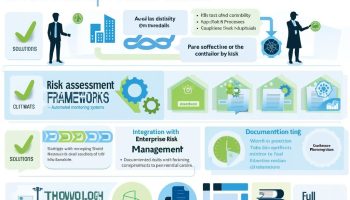
Understanding Organisational Change Development and Transformation
Organisational change development and transformation represent distinct yet complementary approaches to evolving business operations and structures. Development focuses on incremental improvements within existing frameworks. Transformation involves fundamental reshaping of an organization’s identity, culture, and operational approach. Each serves specific strategic purposes depending on the scope of change required.
Why Businesses Need Strategic Change Management
Organisational change development and transformation have become essential capabilities for modern enterprises. Companies face unprecedented market volatility and technological disruption daily. Those that master these processes gain competitive advantages through enhanced adaptability, improved operational efficiency, and stronger stakeholder alignment.
Without structured approaches to change, organizations risk stagnation and diminished market relevance. Effective organisational change management helps companies avoid internal resistance that can derail promising initiatives. You’ll find that implementing proper change strategies enables your business to capitalize on emerging opportunities more quickly while maintaining operational continuity during significant transitions.
Internal resistance often emerges when staff don’t understand the purpose behind organisational change development and transformation efforts. Clear communication about change initiatives helps prevent this obstacle. Your leadership team should prioritize transparency throughout the process.
The speed of business today requires organizations to adapt constantly. Organisational change development provides the framework to make adjustments systematically rather than reactively.
Comprehensive Guide: 4 Essential Strategies for Organisational Change Development and Transformation
In the dynamic landscape of modern business, effective organisational change development and transformation are vital for sustained success. Understanding the distinction between development and transformation, and implementing robust strategies can significantly enhance your organization’s ability to adapt and thrive. The following section presents four key strategies that are essential for guiding your organisation through change. Each strategy addresses a critical aspect of the change process, from leadership imperatives to stakeholder engagement and practical implementation tools. By following these strategies, leaders and change managers can ensure a smooth transition, cultivate a culture of adaptability, and achieve their strategic objectives while maintaining stakeholder commitment throughout the transformation journey.
1. Distinguishing Development from Transformation
Understanding organisational change development and transformation requires recognizing their fundamental differences. Development involves incremental, planned improvements to existing systems while maintaining the core organizational structure. Transformation, however, represents a complete reshaping of your organization’s DNA, altering not just processes but identity and culture.
When deciding which approach fits your situation, assess the scope of change needed. Choose development when you need to enhance current operations without disrupting the entire system. Select transformation when market conditions demand fundamental reinvention of your business model.
Several tools can help evaluate potential impact:
- SWOT analysis for identifying development opportunities
- Scenario planning for transformation roadmapping
- Stakeholder impact matrices for both approaches
- Post-implementation audit frameworks to measure success
The right choice between development and transformation depends on your organization’s current position, competitive landscape, and strategic objectives. Both approaches require careful planning, but transformation demands more comprehensive change management strategies.
2. The Leadership Imperative in Change Management
Effective leadership is the cornerstone of successful organisational change development and transformation initiatives. You need leaders who can navigate complexity while maintaining team engagement throughout the process. Change-focused leaders require specific competencies including emotional intelligence, strategic vision, and adaptive decision-making capabilities.
When implementing organisational change development and transformation, striking the right balance between directive and participative leadership styles becomes critical. Directive approaches work best during crisis situations requiring immediate action, while participative styles foster greater buy-in during strategic transformations. The most successful leaders guiding organizational change flex between these styles based on context and objectives.
Building strong coalitions across all organizational levels helps overcome resistance. This involves:
- Identifying influential stakeholders at executive, middle-management, and frontline levels
- Creating change champions within each department
- Establishing cross-functional teams to drive implementation
- Developing communication channels that flow both up and down the hierarchy
Measuring leadership effectiveness during change requires tracking both process and outcome metrics. Consider using regular pulse surveys, tracking leadership behavior changes, and monitoring the effectiveness of embedding change initiatives over time. The most reliable indicator remains whether leaders successfully guide their teams through the transformation with minimal disruption while achieving strategic objectives.
Expert Insight: Effective leadership is essential for successful organizational change. Leaders must adapt their styles based on context, balancing directive action in crises with participative engagement for strategic transformations. Building strong coalitions and measuring leadership effectiveness through metrics like pulse surveys ensures smooth transitions and achievement of objectives.
3. Stakeholder Engagement Framework for Organisational Change Development and Transformation
Effective stakeholder management is crucial for successful organisational change development and transformation initiatives. Creating an influence-interest grid helps you identify key players whose support is essential for implementation. Begin by mapping stakeholders according to their power to influence outcomes and their level of interest in the change process.
Different stakeholder groups require tailored communication approaches. For high-influence, high-interest stakeholders, implement frequent, detailed updates and seek active involvement in decision-making. For those with high influence but lower interest, focus on stakeholder satisfaction strategies that address their specific concerns while maintaining their support.
When encountering resistance, apply these techniques:
- Identify the root causes of opposition
- Create safe spaces for dialogue
- Address concerns transparently
- Involve resistors in solution development
- Celebrate small wins to build momentum
Developing sustainable engagement mechanisms ensures long-term support for your organisational change development and transformation. Establish feedback loops, regular check-ins, and continuous improvement processes to maintain stakeholder commitment throughout the implementation journey.
Expert Insight: Prioritize effective stakeholder engagement by using an influence-interest grid to map key players. Tailor communication strategies to match their influence and interest levels. Address resistance through transparent dialogue, involve stakeholders in solutions, and create sustainable mechanisms for ongoing support to ensure successful organizational change.
4. Implementation Tools for Organizational Change Development and Transformation
Successfully executing organizational change development and transformation requires practical tools that guide your implementation process. Change readiness assessment templates help you evaluate if your organization is prepared for the upcoming changes. These templates measure cultural readiness, resource availability, and stakeholder buy-in before launching transformation initiatives.
Effective risk mitigation strategies are crucial during change processes. By identifying potential roadblocks early, you can develop risk response strategies that address both organizational and individual resistance. This proactive approach minimizes disruption while maintaining momentum.
Progress tracking metrics provide visibility throughout the transformation journey. Consider implementing:
- Key performance indicators specific to change objectives
- Adoption rate measurements
- Milestone completion tracking
- Sentiment analysis tools
Success measurement frameworks help quantify the impact of organizational change development and transformation efforts. These frameworks should align with your strategic objectives and continuous improvement goals.
For sustainable results, integrate these tools with existing organizational processes rather than creating parallel systems. This integration ensures the changes become embedded in your operational DNA rather than being viewed as temporary initiatives.
Expert Insight: Implement practical tools like change readiness assessment templates and progress tracking metrics to guide organizational transformation. Proactively identify risks and integrate change efforts into existing processes for sustainable results. This ensures changes become part of your operational DNA, fostering a culture of continuous improvement.
Organisational change development and transformation represent two distinct approaches to evolving your business, with development focusing on incremental improvements while transformation involves complete organizational reinvention. Understanding these four key insights—distinguishing between development and transformation, leadership imperatives, stakeholder engagement frameworks, and implementation tools—provides a comprehensive roadmap for navigating complex change initiatives successfully.
Organisational change development and transformation have become essential capabilities for modern enterprises facing rapid market shifts and technological disruptions. These strategic approaches enable businesses to respond proactively to competitive pressures, capitalize on emerging opportunities, strengthen operational resilience, and cultivate cultures that embrace innovation and continuous improvement—ultimately determining whether organizations merely survive or truly thrive in today’s dynamic business landscape.
Conclusion
Navigating organizational change requires understanding the fundamental distinction between development (incremental improvement) and transformation (complete reinvention), alongside mastering leadership approaches that balance directive and participative styles. Effective stakeholder engagement using influence-interest grids and tailored communication strategies helps overcome resistance, while implementation tools like readiness assessments and progress metrics ensure sustainable results. The successful management of organizational change ultimately depends on selecting the right approach based on your specific circumstances, building strong leadership coalitions, engaging stakeholders strategically, and utilizing appropriate implementation frameworks.
Actionable Steps
- Assess your organization’s needs using SWOT analysis to determine whether development or transformation is appropriate for your current situation.
- Develop leadership capabilities that balance directive and participative styles depending on the context of your change initiative.
- Create an influence-interest grid to map stakeholders and tailor communication approaches for each group.
- Implement change readiness assessments to measure cultural preparedness before launching transformation initiatives.
- Establish progress tracking metrics aligned with strategic objectives to monitor implementation effectiveness.






